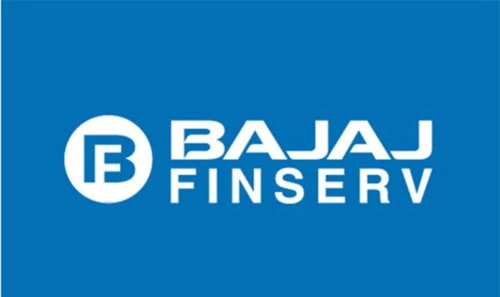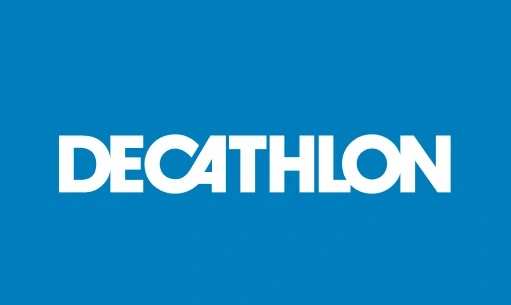For small businesses, the pressure to run seamless payroll is constant and ever-present. Payroll involves more than just calculating payments—it’s about ensuring compliance with regulations, maintaining accurate employee records, and fulfilling tax obligations, all at once. With fewer resources, smaller teams must juggle multiple roles, making payroll an especially burdensome administrative task. Thankfully, modern payroll tools enable you to run payroll in minutes (small business), empowering small teams to redirect their energy from repetitive paperwork and administrative headaches toward strategic growth initiatives and customer-facing activities that propel the industry forward.
Payroll accuracy has a direct impact on employee satisfaction and regulatory compliance. Persistent payroll mistakes can lead to dissatisfaction, erode trust, and even prompt valued employees to leave. Errors with paychecks or tax filings can not only disrupt morale but also lead to expensive penalties and audits. As small teams expand their capacity across multiple roles and responsibilities, the benefits of streamlined, automated payroll solutions become increasingly essential for maintaining focus, morale, and confidence. It becomes evident that the right payroll approach is not just a routine task—it’s a foundational part of your business’s reputation and productivity.

The right payroll system not only speeds up payments but also ensures precision and peace of mind by automating calculations, syncing with tax schedules, and reducing the margin for costly human mistakes. Small businesses must proactively address payroll to prevent distractions that stall growth and avoid employee frustration or state and federal penalties. With intuitive platforms and automation, small teams today have more leverage than ever to minimize day-to-day risks, ensure regulatory compliance, and reclaim precious time that can be invested in innovation and service excellence.
Staying up-to-date with evolving payroll technology helps small teams remain competitive in their industry, build sustained employee trust, and establish a resilient business foundation that can withstand new challenges. Leveraging trustworthy and modern payroll resources also means you’re never navigating these complexities alone. For additional insights on navigating common payroll obstacles, authoritative resources like SHRM’s payroll software guide can be invaluable, offering timely guidance for both new and seasoned business managers.
Understanding Payroll Challenges for Small Businesses
Payroll is one of the most complex and time-consuming administrative duties small businesses face today. Not only are owners and managers responsible for getting numbers right, but they’re also confronted with additional variables, such as understaffed finance departments, constantly evolving regional and federal regulations, and intense pressure to avoid late or inaccurate payments. According to recent industry reports, more than half of small businesses spend at least three hours each month just navigating payroll taxes, losing valuable productivity that could be better spent on growth or innovation. The complexity of payroll is even more pronounced for companies without a dedicated HR or accounting professional.
The landscape is further complicated by manual processes, which inevitably increase the risk of human error, failure to meet compliance deadlines, and even the possibility of security breaches. For example, misclassifying employees, failing to meet state-specific tax requirements, or entering incorrect deduction amounts can all result in significant consequences. As businesses expand or start hiring remote employees, the task of ensuring compliance across different regions becomes more difficult, raising the stakes with each additional employee or jurisdiction. Staying ahead of these changes requires constant vigilance and a willingness to adopt new workflows.
Key Features to Look for in Payroll Software
When evaluating payroll options, small teams need to look for software solutions that go beyond simple number-crunching. The most effective payroll platforms offer much-needed support, especially where the stakes are highest. Key features include:
- Automated tax calculation and filing, ensuring fewer errors and a lower risk of missing compliance deadlines
- Direct deposit capabilities for faster, more reliable distribution of employee paychecks
- Employee self-service portals where team members can download their own pay stubs and tax forms
- Integration with accounting software to prevent data discrepancies and save time on bookkeeping
- A scalable infrastructure that grows with your business, making it easier to onboard new employees
Alongside these must-have features, intuitive user interfaces and automated reminders ensure that payroll runs are completed on time, and that critical dates—such as tax submission deadlines—don’t slip through the cracks. Selecting payroll software with robust reporting functionality further helps catch mistakes before they become major issues.
Top Payroll Solutions for Small Teams
Today’s marketplace features several specialized payroll tools designed for smaller businesses. Popular platforms like UKG Ready offer robust HR and payroll functionality tailored specifically for small and medium-sized teams. Known for its intuitive dashboards and real-time compliance updates, UKG Ready makes it easier to manage paid time off, wage garnishments, and stay up-to-date with periodic software and regulatory updates.
QuickBooks Payroll is another leading choice among small teams, particularly those that already leverage QuickBooks for accounting. QuickBooks Payroll stands out for automated tax filing, responsive customer support, and unique features like tax penalty protection—making it a top pick for businesses looking to minimize risk and integrate seamlessly with their existing software tools.
It’s important to remember that selecting a payroll provider is about more than just checking the box on certain features. Factors such as uptime reliability, data security measures, and responsive customer support are all critical for a lasting, positive experience. Reliable, well-reviewed options deliver the peace of mind that comes with knowing support is available when the unexpected occurs.
Benefits of Integrating Payroll with HR Functions
Integrating payroll and HR into a single, unified system is an increasingly popular way for small businesses to eliminate redundant data entry, streamline compliance, and deliver a seamless experience for both managers and employees. Solutions like Thryv Workforce Center enable administrators to manage wages, onboarding, benefits, and compliance tracking from a central dashboard—ensuring consistency, reducing errors, and facilitating reporting for audits or internal reviews.
Adopting a holistic approach enables easy updates to employee information, access to detailed pay histories, and the generation of consolidated reports at a moment’s notice. This not only maximizes transparency between staff and management, but also ensures that everyone is on the same page regarding compliance and benefits utilization. The ability to update HR and payroll records in one place greatly enhances accuracy and speed when changes occur.
Cost Considerations and Budgeting
Migrating from manual to automated payroll can yield substantial cost savings for small businesses. Unlike manual payroll processes—which can cost an average of $13,845 annually, including staff hours and risk of penalties—modern payroll platforms typically range from $1,560 to $3,000 a year, factoring in software licensing, support, and savings from fewer errors. Remember to account not only for software costs, but also for implementation fees, ongoing support, and potential reductions in costly late fees or fines due to compliance issues.
Features like automated compliance, regularly updated tax tables, and streamlined year-end reporting can significantly reduce the likelihood of costly mistakes, ultimately providing greater predictability and control over your yearly budgeting. By preventing missteps and enabling more efficient labor utilization, these investments often pay for themselves over time.
Steps to Implementing a New Payroll System
- Identify current needs: Begin by mapping out your pain points and defining what outcomes you hope your new payroll solution will achieve.
- Vet solutions: Compare potential software vendors based on features, security protocols, customer support, and their ability to integrate with existing tools.
- Plan migration: Gather and prepare employee data, establish a careful rollout timeline, and ensure that your staff have access to training and support guides.
- Test the software: Conduct a parallel payroll cycle to verify accuracy and compatibility before fully implementing it.
- Monitor and optimize: After launching, keep a close watch on system performance, solicit staff feedback, and make adjustments as required.
Common Mistakes to Avoid
- Missing tax law updates or failing to comply with new regulations—still a top reason small businesses face fines
- Neglecting data security measures and leaving sensitive payroll records vulnerable to breaches
- Failing to provide comprehensive training for team members tasked with payroll responsibilities
- Choosing a system that won’t adapt or scale as your team and business evolve
Conclusion
Small businesses can gain substantial time, increased confidence, and reliable peace of mind by implementing the right payroll solution tailored to their specific needs. The ideal payroll system ensures greater accuracy, eases compliance burdens, and builds the trust necessary to attract and retain dedicated team members. By being methodical in your software comparison—examining features, integrations, and true total cost—small teams can successfully transform their payroll process from an administrative challenge into a business asset that supports efficiency and long-term growth.














